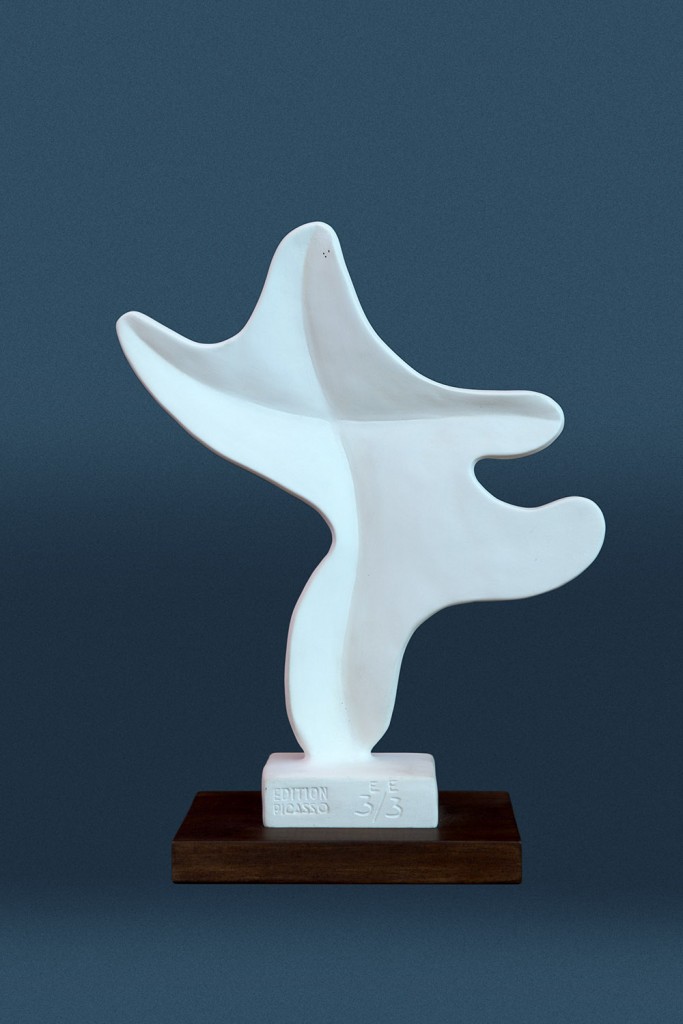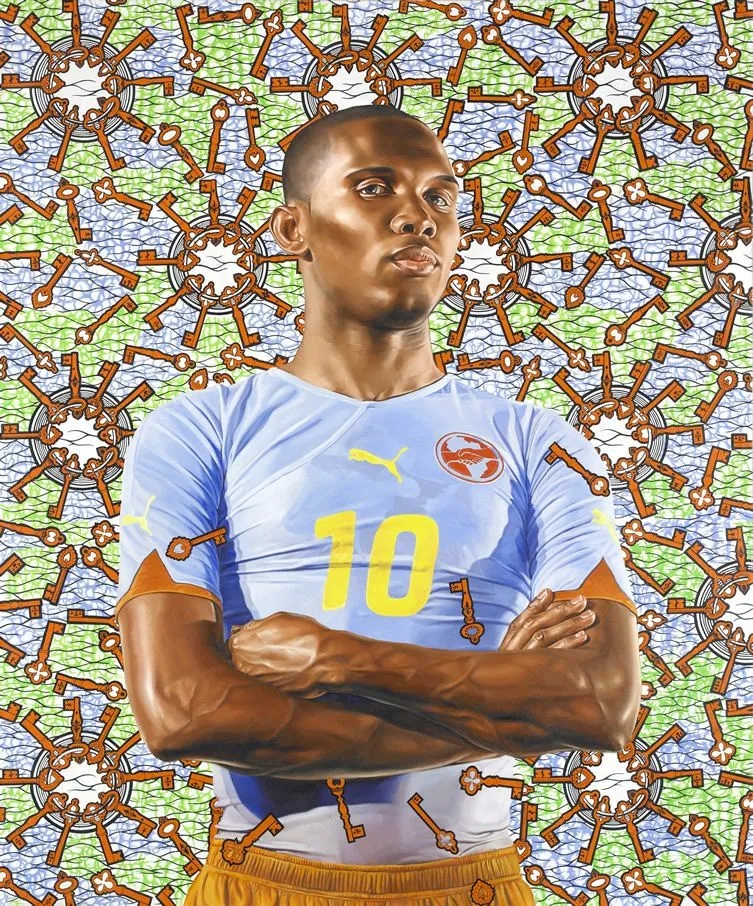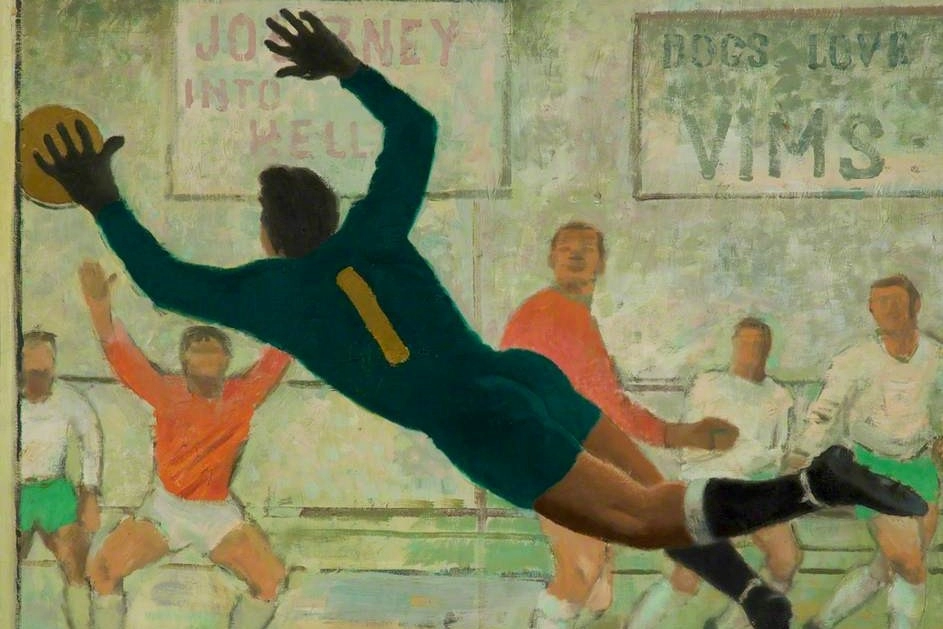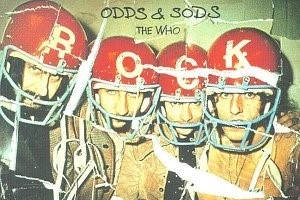Since football is a part of human lives which has been extensively followed for many years, it doesn't shy away even from visual arts. Artists have always been attracted to depicting the stadium atmosphere with crowds of spectators and to the game itself, the football players and the opportunity to peek behind the scenes of the stadiums as well. A significant impulse for the artistic depiction of football was the exhibition Football and the Fine Arts held in the UK in 1953. Later, football began to permeate the art in another context – that is as a globalized commercial game associated with social phenomena such as exaggerated masculinity or violent behavior of die-hard fans.
By 1170, football had become so popular that Archbishop Thomas Becket mentioned it in his description of London. Although the popularity of the game grew during the following centuries, its depiction in art was still rather rare. A few examples from before the codification of the game rules in 1863 include an oil painting by Thomas George Webster exhibited at the Royal Academy in 1839. The theme of other paintings is soccer as a rural pastime. Football was gradually spreading to schools as well and when it gained popularity also as a professional sport, its artistic representation significantly rose, too. In those times, football became the motif of paintings by e.g. Duncan Grant and a painting from 1897 by Clarence Bretherika showed a match in Lancashire, whose huge crowd of fans already resembled the events at today's stadiums. Later, massive crowds of fans at Wembley Stadium in 1923 were depicted by William Reginald Howe Browne.
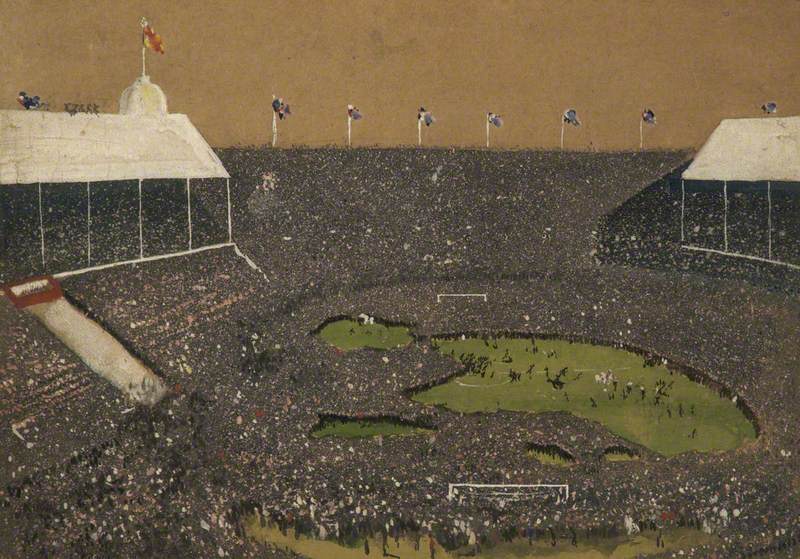
After the 1953 exhibition Football and the Fine Arts the UK artists' interest in football started to grow even more. The exhibition broke through the barrier between football and visual art, and at the same time the football motif began to appear in other than purely realistic paintings. On the occasion of the 90th anniversary of the British Football Association, artists were invited to create pieces depicting any aspect of football; not just the game itself, but all related activities.
London exhibition sparks artists' interest in soccer
The artists thus depicted training players, the mood in the dressing room or, of course, the fans and the atmosphere at the stadiums. For instance, one of the winners of the painting category Lawrence Toynbee focused on the players' practice in his painting Mid-week Practice at Stamford Bridge; the winner of the relief printing and lithography category Robert Tavener looked behind the scenes of a stadium in his simply titled piece The Changing Room; the same did also Hubert Andrew Freeth in his painting Watford Dressing Room.

The fans' point of view was utilised by Alistair Grant, the author of Snow at Stamford Bridge. There you can notice the peculiarities of this stadium, which until 1968 included a greyhound racing track. An unusual perspective from right behind the goal was chosen by Daphne Chart for his painting Clapham Common, which depicts a stadium in the southern suburbs of London of the same name. Laurence Stephen Lowry's painting Going to the Match captures fans getting together at the Burnden Park Stadium. Literally crowds then pour to the Fratton Park Stadium in Portsmouth in the painting Saturday Taxpayers by Gerald Cains.
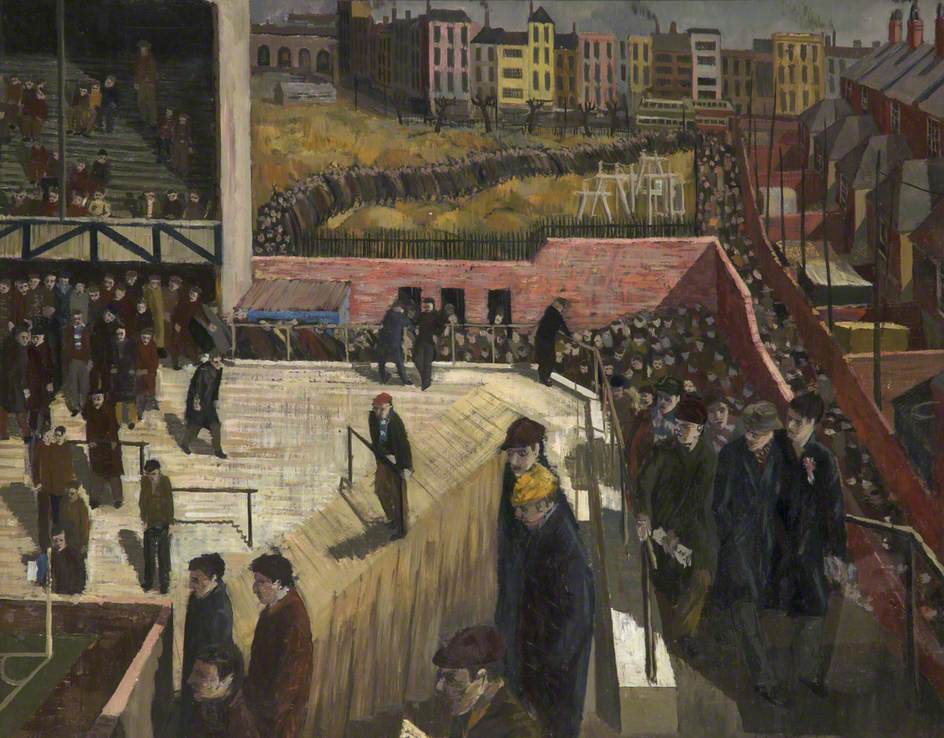
Since then, football themes in art haven't actually changed much. Artists depict the game as such, football players, their fans and the atmosphere at stadiums, and from time to time they also peek behind the scenes into football locker rooms.
The game captured at a crucial moment or a flawless record of the entire match
The game itself is depicted in the painting from the 1930s, Any Wintry Afternoon in England, by Christopher Richard Wynne Nevinson. Six decades later, Cecil Walter Hardy Beaton, otherwise known as the photographer, portrayed a goalkeeper in the middle of an action in the painting aptly named Footballers. While the goalkeeper is trying his best to catch the ball, his opponent in the background is already celebrating scoring the goal.
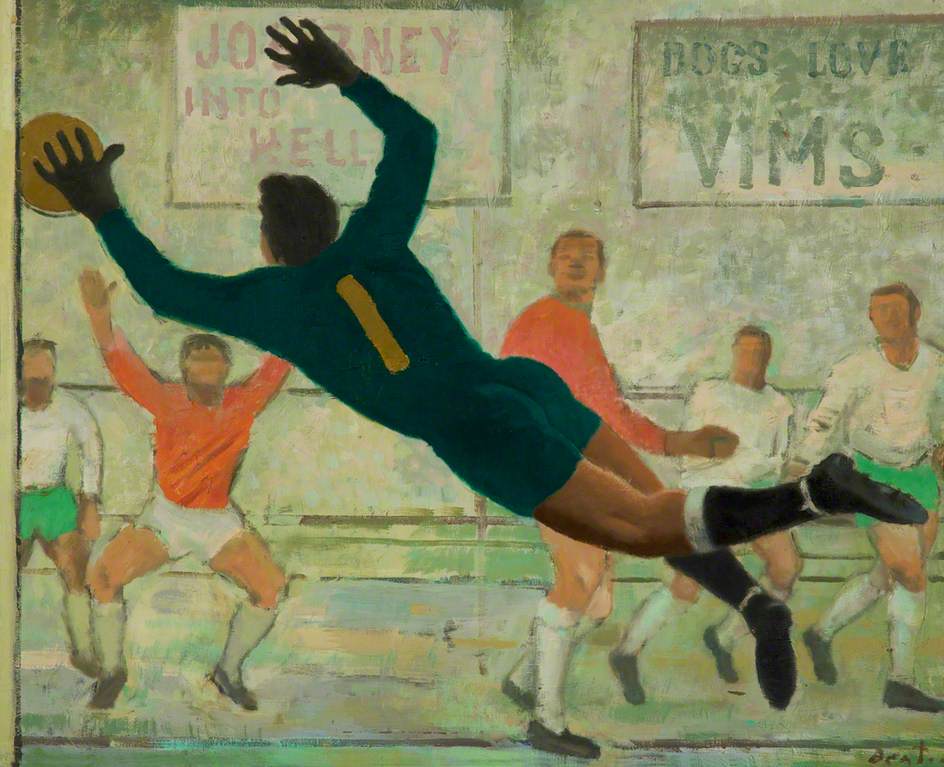
German artist Harun Farocki analyzed in detail the most watched match in history, the game between France and Italy in the 2006 World Cup final. The two-and-a-half-hour video installation named Deep Play consists of twelve large screens which follow the development of the game from different point of views, e.g. the players, coaches, the audience or the police. It also notices the TV broadcasting or the events in front of the stadium.
Picasso and Warhol portrayed footballer, too
An art piece capturing the graceful movement of a player is represented, for example, by the statue of Footballeur by Pablo Picasso. Over time, footballers have become celebrities, hence their portrayal can also be found in pop culture. Such an encounter of two incredibly famous individuals is represented in a painting by Andy Warhol, who in 1970 portrayed the popular Brazilian player Pelé. Kehinde Wiley, who is famous for his presidential portrait of Barack Obama, portrayed the Cameroonian forward Samuel Eto'a.
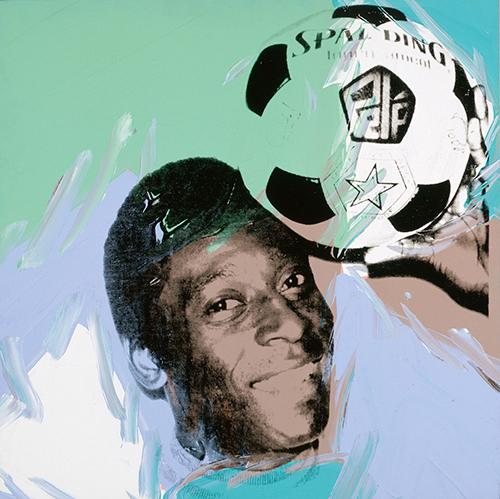
Tabitha Jussa, a contemporary British photographer, has thematized the football fans for a change. Using time-lapse techniques, she captured fans before a match in her series of large-format photographs titled Match Day; she notices their rituals and movements in her native Liverpool. P. J. Crook takes on a lighthearted approach towards football fandom – in Armchair Supporters he portrayed three men and a god sitting in front of a TV with the indispensable beer cans in their hands.
Contemporary art doesn't shy away from criticism
There are numerous negative phenomena associated with football, too, whether it is the fans' behavior or commercialization and globalization. All these were pointed out by an exhibition The World ' s Game held in Miami in 2018, which reflected the role of football in the context of social and political topics. It observes the negative aspects of being a fan, intense nationalism and excessive masculinity accompanying soccer.
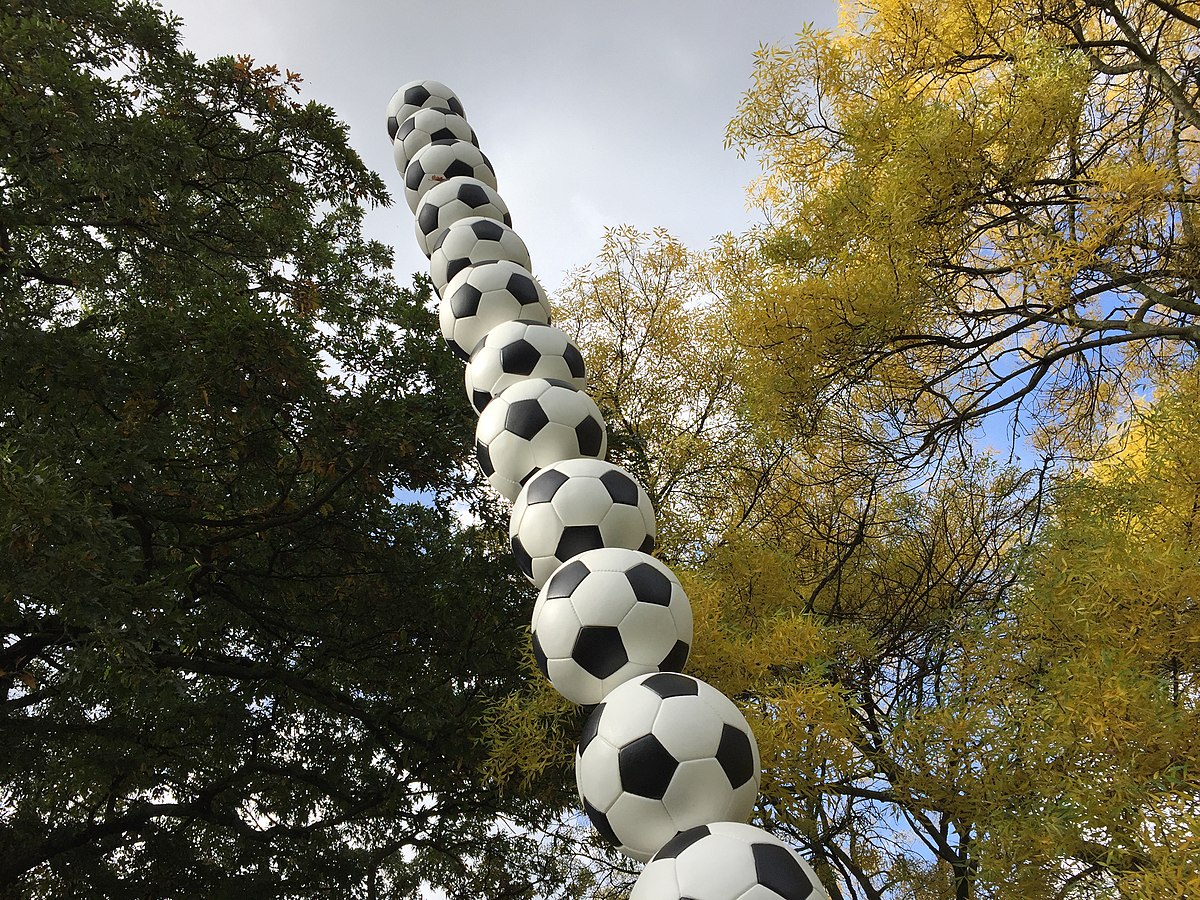
One such critic is, for example, the New York artist Hank Willis Thomas, who calls into question the competitive sports mentality and fanatical sports fandom. His statue Endless Column, made of stacked footballs, refers to the famous statue of the same name by Constantin Brancusi, which commemorate the sacrifice of Romanian soldiers during the Second World War.
Sport as a religion and harsh street reality
Guatemalan artist Dario Escobar also contributed the exhibition with a piece created from deflated soccer balls forming chandeliers. His work searches for the similarities between sport and religion both in Latin America and around the world. He says that nowadays athletes have become such important role models for young people that from them sport is becoming what religion was for previous generations.
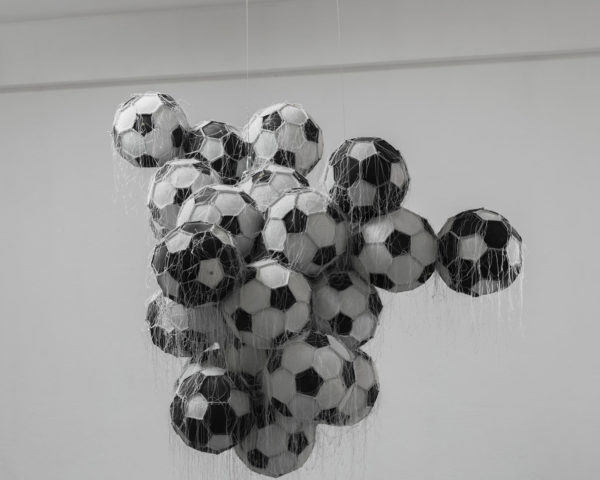
Another Latin American artist, Martin Gordopelota, reveals the true face of street football in Buenos Aires. In his paintings the lead part is played by ordinary people, often rather poor and chubby, who are not short of a cigarette or a bottle of beer in their hands. Scenes full of commonness and frustration create a stark contrast to the glamorous world of professional football.

Robert Guerrera and his sequined red soccer cleats draw attention to machismo associated with football. Exploring masculinity is also the theme of Eddie Peak's performance Touch – he lets the footballers play almost naked, wearing merely football cleats and and knee-high socks, by which he brings together the exploration of masculinity and sexuality in sport, as well as questions about nudity in art history.
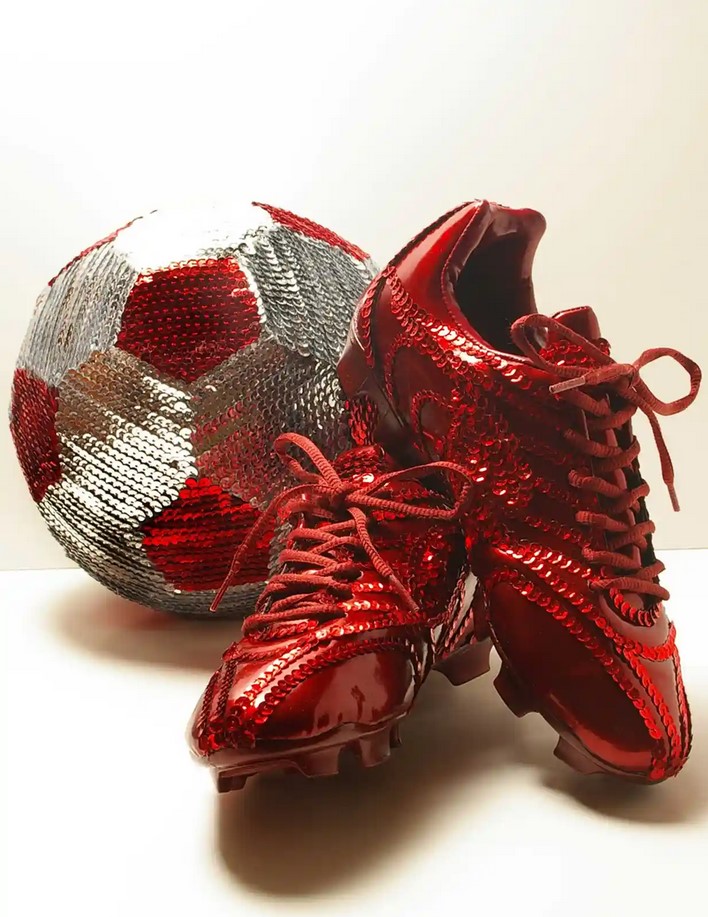
The issue of football rowdies is the main there for Polish artist Marcin Dudek, whose younger self used to be a die-hard fan of the football club Cracovia. Dudek creates objects, collages and last but not least live performances. His work touches on issues of power, control and violence.
Street art celebrates football stars and criticizes commerce
Football, whether inspiring a celebration of popular players or its criticism, has also made its way to street art. The two attitudes towards football were juxtaposed, for example, during the 2014 FIFA World Cup in Brazil, where celebratory pictures of the national team players met much gloomier pieces drawing attention to the fact that under cover of the sport enthusiasm, the country's social issues were being forgotten.
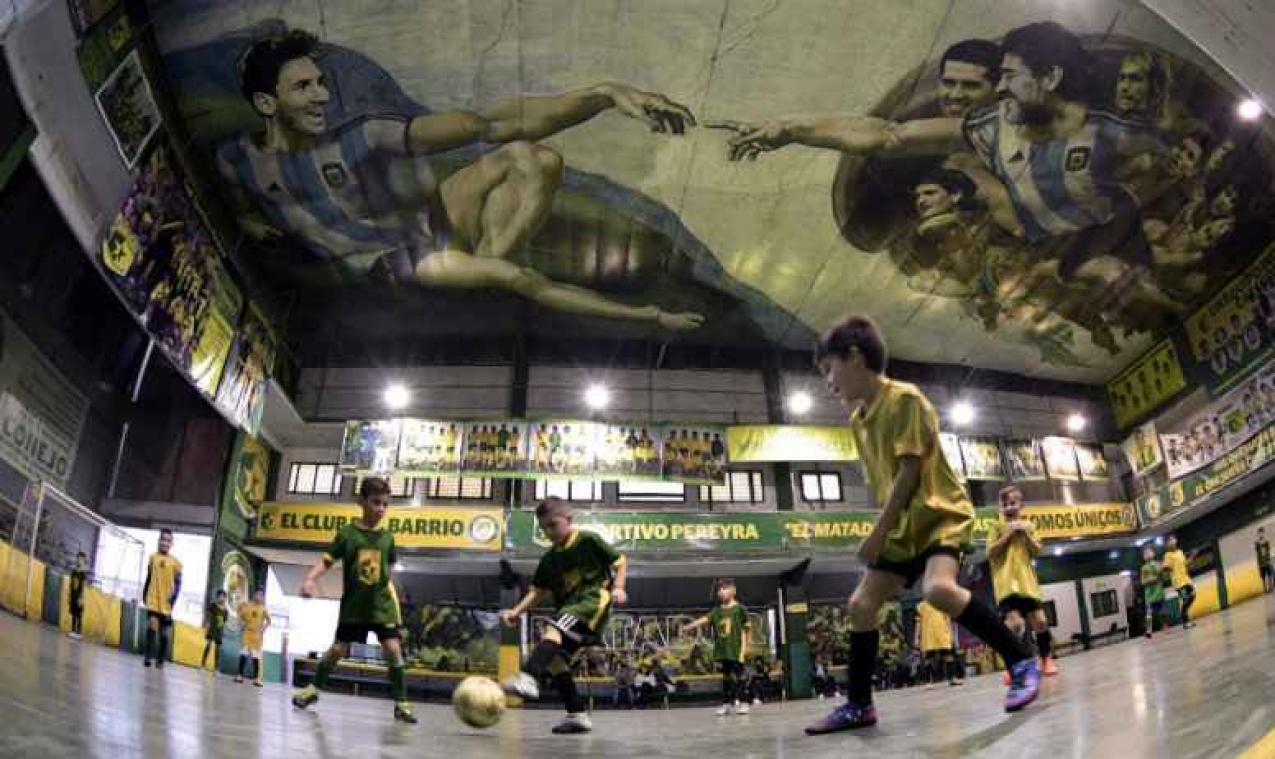
Footballers pop up on walls across the world, from the UK to Italy and Latin America. When AS Roma captain Francesco Totti retired from football in 2017, his face appeared on several mural around the city. Diego Maradona was portrayed by artist Jorit Agoch in Naples, where the famous Argentinian spent the best years of his football career. Maradona, of course, wasn't forgotten in his homeland either; in Buenos Aires, him together with Lionel Messi and other player are depicted in a scene reminiscent of Michelangelo's Creation of Adam.
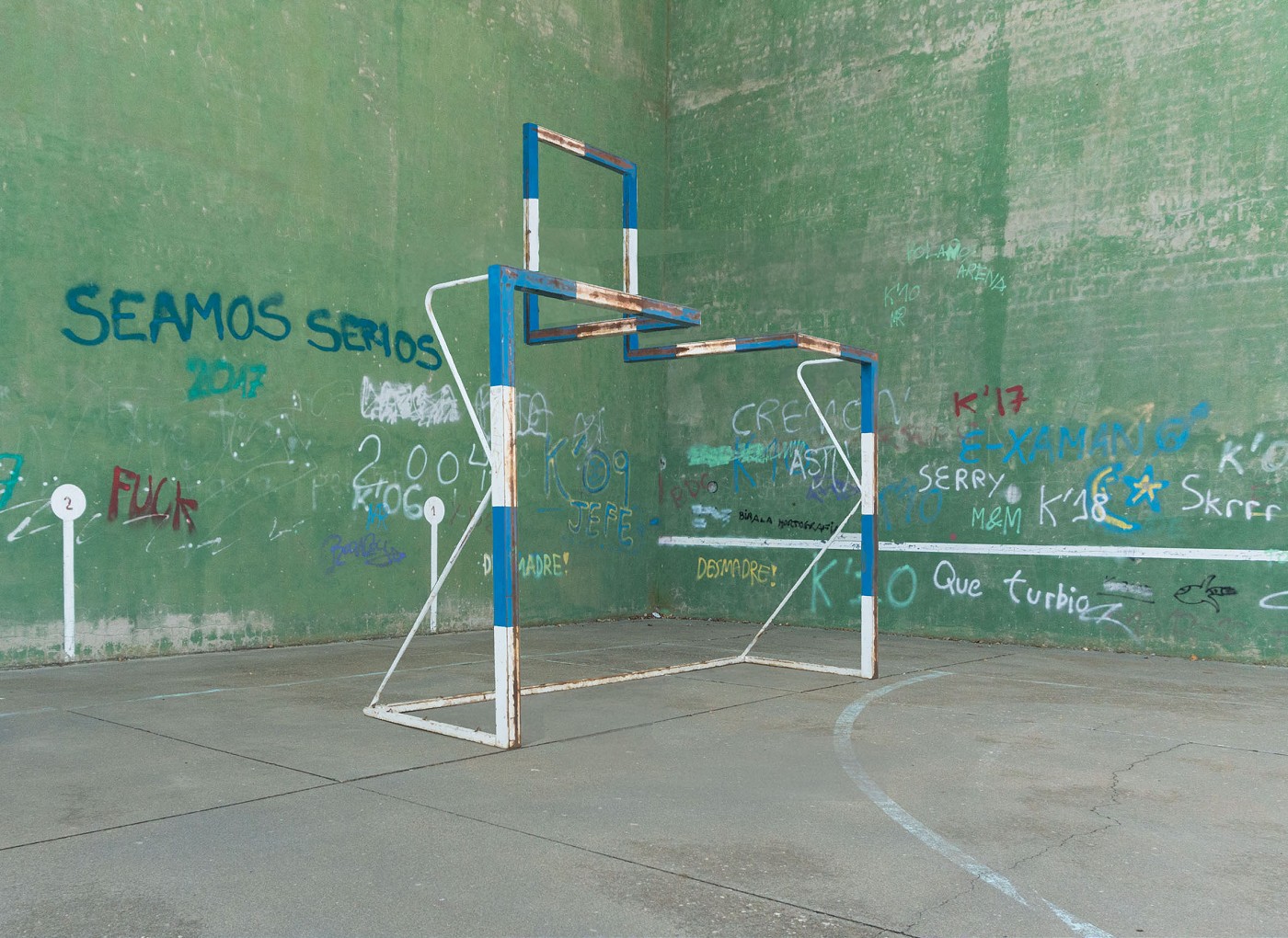
The football goals as objects are the central motives of a young Spanish artist Ampparito, whose street art alters familiar objects in different ways and thus questions their meanings and points out to the absurdity of the social phenomena associated with them. In his piece Goal, he changes the shape of football goals, which for him represent his treasured memories of a childhood spent on school playgrounds.
